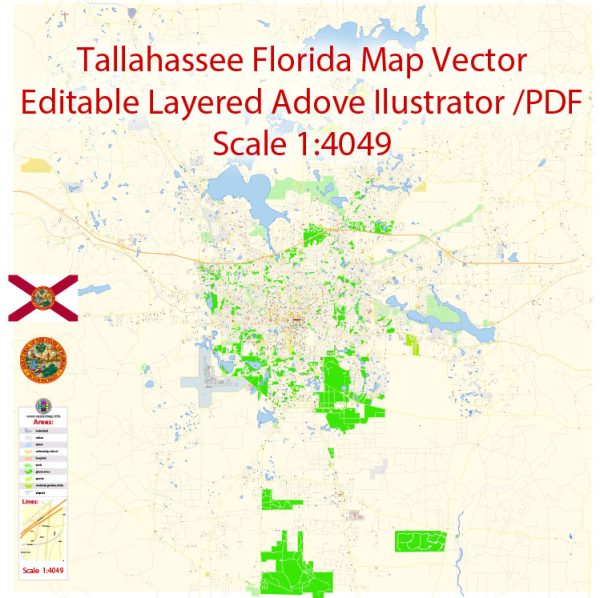Tallahassee, the capital of Florida, has a rich history of urban development that reflects the broader historical trends in the United States. The city’s growth and evolution have been shaped by various factors, including Native American presence, European colonization, territorial changes, economic shifts, and political developments. Here’s a brief overview of Tallahassee’s history of urban development:
- Pre-Colonial Period:
- The area that is now Tallahassee was originally inhabited by the Apalachee and other Native American tribes.
- The Apalachee people established a significant settlement called Anhaica, near the present-day Capitol building.
- Spanish and British Colonial Periods:
- Florida was a Spanish territory from the 16th century until 1763 when it was ceded to the British as part of the Treaty of Paris that ended the French and Indian War.
- During the British period (1763-1783), the territory was divided into East Florida and West Florida, with Tallahassee situated in East Florida.
- The Spanish regained control in 1783 as part of the Treaty of Paris that concluded the American Revolutionary War.
- Territorial Period:
- Florida became a U.S. territory in 1821, and Tallahassee was chosen as the capital.
- The city was strategically located between Pensacola and St. Augustine, the capitals of the two former Floridas.
- Antebellum Period:
- Tallahassee experienced growth during the antebellum period, with the construction of notable buildings such as the Old Capitol and the Knott House.
- The city’s economy was primarily based on agriculture, including cotton and tobacco.
- Civil War and Reconstruction:
- Tallahassee, like many Southern cities, was affected by the Civil War. It served as the site of the final Confederate government session in 1865.
- Reconstruction brought challenges and changes to the city, as the Southern states readjusted to the post-war era.
- Post-Reconstruction to Mid-20th Century:
- Tallahassee continued to grow in the late 19th and early 20th centuries, with the expansion of railroads and the establishment of Florida State College for Women (now Florida State University).
- The cityscape saw further development during the Florida Land Boom in the 1920s, followed by economic challenges during the Great Depression.
- Mid-20th Century to Present:
- Tallahassee’s urban development expanded in the mid-20th century with population growth, suburbanization, and the establishment of government and educational institutions.
- The city’s economy diversified, with government, education, and healthcare becoming significant sectors.
- Urban renewal projects and infrastructure developments shaped the city’s modern landscape.
Today, Tallahassee stands as a blend of historical charm and contemporary growth, with a diverse economy and a prominent role as the political and educational center of Florida. The city’s historic districts, landmarks, and cultural institutions showcase its enduring connection to its past.


 Author: Kirill Shrayber, Ph.D.
Author: Kirill Shrayber, Ph.D.